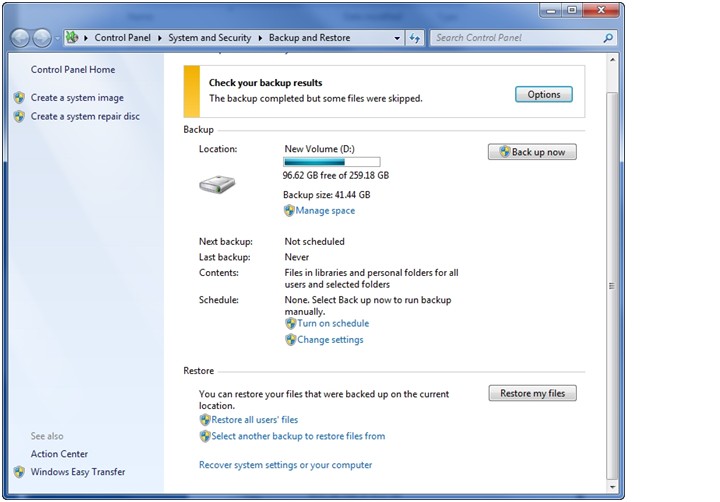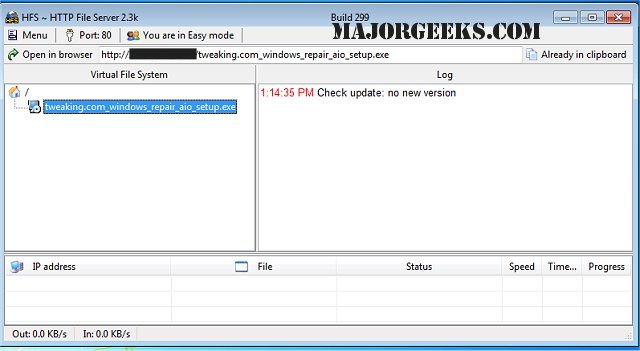

- HFS FILE SYSTEM ON WINDOWS 7 MAC OS X
- HFS FILE SYSTEM ON WINDOWS 7 INSTALL
- HFS FILE SYSTEM ON WINDOWS 7 FREE
HFS FILE SYSTEM ON WINDOWS 7 INSTALL
It is not, however, possible to install a Windows operating system on exFAT.
HFS FILE SYSTEM ON WINDOWS 7 MAC OS X
Consequently, exFAT is not yet widely used in consumer electronics, despite having been designed for just that purpose (and even though operating systems as far back as XP SP2 and Mac OS X 10.6.5 support exFAT). This file system is not, however, supported as widely as FAT32 and NTFS due to Microsoft's exFAT licensing scheme. This is extremely important to maximize write performance, especially compared to NTFS, which requires that deleted data be overwritten.
HFS FILE SYSTEM ON WINDOWS 7 FREE
Free space bitmaps take care of capacity allocation, enabling improved delete performance. Unlike FAT32, clusters may grow up to 32 MB, and access control is managed through ACL. All current Windows versions since Vista SP1 or XP SP2 support exFAT at up to 64 ZB and files of up to 16 EB. High-capacity SDXC cards all come pre-formatted with exFAT, though it is not strictly required for use. Should a write process fail due to a power failure, for instance, the system restore the pre-write journal and returns to a stable file system state.ĮxFAT was designed by Microsoft specifically to handle flash memory. It also enables journaling of metadata, meaning that a write operation is first logged, the write procedure is executed, and the successful completion is updated in the journal. Because of this, it can uniquely suffer from fragmentation. Unlike a File Allocation Table, the MFT is not fully written during format, and it grows over time. The smallest files are stored directly within the MFT, which is a file itself. The Master File Table (MFT) stores files' properties, location, and access information. This is also why 4 KB cluster size is so important to SSD performance and, as you’ll see, NTFS has advantages over the other file systems. A small cluster size of 4 KB (compared to 32 KB on FAT32) ensures that there is less wasted capacity for small files written to the drive. NTFS supports LZ77 compression, file-level encryption (typically AES), and access control, managed through ACL.

File names can be up to 255 characters long. The file size limit is a very relevant real-world advantage over FAT32’s 4 GB. Files can be up to 16 TB in size (16 EB in theory), while partitions currently max out at 256 TB. The New Technology File System debuted alongside Windows NT and features similar attributes as IBM’s HPFS. FAT32 also does not support rights management. FAT32 does not support journaling, which means that integrity issues with user data or meta data can result in lost information. File names are flexible and allow up to 255 characters. This can be an issue with video files or drive images, for example. Since file size is stored in a 4-byte field, maximum file size is limited to 4 GB. Cluster size directly depends on partition size, and clusters range from 512 bytes to 8 KB. Modern Windows systems choose NTFS by default, and Mac OS runs HFS+.īeing a 32-bit file system, FAT32 is limited to a maximum partition size of 32 TB with 8 KB clusters, although the original specifications for the format limited the partition size to 2 TB and current Windows operating systems make it difficult to enable FAT32 partitions larger than 32 GB. Nearly all mainstream operating systems can create, read, and write FAT32 partitions, and it still is a reasonable option for low-capacity external storage, such as USB flash drives. FAT32 was introduced with Windows 95B in 1997 and is still popular today for certain applications because it is widely supported.


 0 kommentar(er)
0 kommentar(er)
